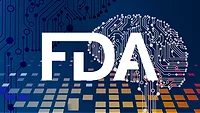Exclusive interview: Q&A with GS1 US, on FDA's New Era of Smarter Food Safety

Food Safety Strategies was recently able to chat with Angela Fernandez, vice president of community engagement, GS1 US, on the FDA's New Era of Smarter Food Safety regulations.
Liz Parker: What is involved in the New Era of Smarter Food Safety from the FDA?
Angela Fernandez: The FDA's New Era of Smarter Food Safety represents a new approach to food safety, leveraging technology and other tools to create a safer and more digital, traceable food system. It is intended to help digitize the supply chain and enable more collaboration and interoperability in the food system.
During the FDA’s presentation on July 13, Commissioner Stephen Hahn and Deputy Commissioner Frank Yiannas discussed the impact of the COVID-19 crisis on the food supply chain and the development of the blueprint for the future of food safety. The pandemic exposed the criticality of innovation and the fact that we do not have an interoperable food supply chain. The blueprint reflects the “food revolution” we face, and suggests that now it is up to the industry to take action to use the tools available and learn from our experiences.
Even prior to the pandemic, it was becoming abundantly clear that there are far too many illnesses and deaths caused by unsafe food. The need to consistently identify food and trace it with efficiency has increased as our supply chain becomes more complex. The CDC estimates that each year roughly 1 in 6 Americans gets sick from a foodborne disease—128,000 are hospitalized, and 3,000 die. The food industry is hopeful that the New Era of Smarter Food Safety will elevate food safety beyond current Food Safety and Modernization Act (FSMA) guidelines and unite supply chain partners in recognizing the urgent need for more digitization and efficiency.
LP: How can the use of standards support the “New Era”?
AF: The blueprint emphasizes the need for tech-enabled traceability as one of its four pillars and GS1 Standards will play a key role in making this vision a reality. Additionally, the blueprint specifically calls for the use of global data standards to help industry speak the same language to transmit product information across the supply chain. It specifically cites GS1 as a standards body that can help harmonize the processes of industry and regulatory agencies, both here in the United States and internationally.
Looking for quick answers on food safety topics?
Try Ask FSM, our new smart AI search tool.
Ask FSM →
As the most widely used supply chain data standards in the world, GS1 Standards enable data systems interoperability and supply chain visibility--including the standardization of critical tracking events and key data elements which are critical for farm-to-fork traceability. A standards-based digital foundation for supply chain partners is essential for leveraging advanced technology and predictive analytics described by the FDA in the blueprint.
When products are uniquely identified, and information about those products are communicated using a common language, products can be tracked with much greater ease than with proprietary numbering, or closed-loop, paper-based systems. Data that is created, collected and shared in a consistent manner helps all supply chain partners—from the farmer to the retailer or restaurant--see a product’s journey, and continuously communicate key data elements during a recall or withdrawal. “One up, one back” traceability is far too limiting to adequately protect consumers and is simply no longer good enough in the digitized “new era.” If you’re digitizing your supply chain, GS1 Standards are an imperative part of this process.
LP: How do GS1 Standards already play a major role in facilitating end-to-end traceability?
AF: GS1 US has been preparing industry for a more focused and collaborative approach to food traceability for almost a decade, ever since the Food Safety and Modernization Act (FSMA) initially became a law in 2011. With two collaborative industry initiatives in the retail grocery and foodservice channels, GS1 US has worked to educate these industries on the value of global data standards and collaborate on implementation guidance to reduce inefficiencies caused by manual processes and enable businesses to communicate more effectively with suppliers and customers.
The initiatives have made great progress in terms of closing the gap between what consumers want—which is transparency and the assurance of safe food--and what the supply chain is capable of delivering. There have been numerous guidelines and resources put forth focused on the value of supply chain visibility, which is a core focus of many of our industry collaboration efforts. As standards are voluntary and flexible, there are varying degrees to which different industry sectors have leveraged GS1 Standards thus far. But one thing is clear—a common language for data increases the speed and accuracy of information being shared about products as they move in the supply chain. This speaks to the FDA’s mission to move to a food system capable of tracing potentially harmful products in minutes--not days or weeks--during a recall.
Now, with an explosion of online shopping due to the pandemic, access to robust product information is an expectation of consumers and will only grow in importance beyond the pandemic. Also, as new technologies are explored, including distributed ledgers, artificial intelligence and the Internet of Things, GS1 Standards already provide a necessary digital foundation to help the data exchanged through technology function as it is intended, thus delivering on the vision of data interoperability.
LP: How will the New Era of Smarter Food Safety blueprint affect suppliers, distributors, manufacturers, retailers and foodservice operators?
AF: A major takeaway from the blueprint’s release is the need for collaboration to prioritize food safety and to make a commitment to supply chain modernization together. In the year ahead, we will see more supply chain partners working together to make strides in digitization. The larger companies are going to make a big effort to bring along smaller partners in terms of education on advanced technologies, preparation for increased automation and phasing out their reliance on manual processes.
It’s important to remember that the blueprint emphasizes creating a food safety culture, just as much as it is embracing technology. The two go hand-in-hand—it’s a sweeping call to all involved in the food industry to change our thinking, aspire to something better and be open to what the food system can be. For example, the blueprint mentions scanning a bag of lettuce and being able to immediately know where it came from to determine if it’s tied to an outbreak of foodborne illness. At GS1 US, we are committed to facilitating the collaboration that supports the FDA’s vision that will make examples like these less of a novelty and something that is just second nature.








